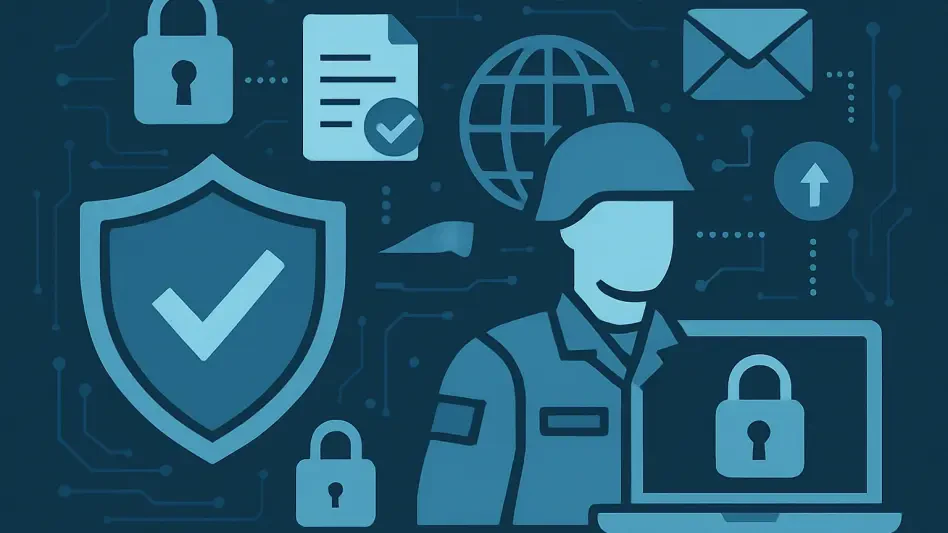Imagine a sprawling network of defense contractors, each handling sensitive data critical to national security, yet over half lack the robust controls needed to protect this information from escalating cyber threats, highlighting the urgency of achieving compliance with the Cybersecurity Maturity Model Certification (CMMC) 2.0. This Department of Defense (DoD) initiative aims to secure the defense supply chain as cyber risks grow and regulatory mandates tighten, putting contractors under mounting pressure to align with stringent standards for safeguarding Controlled Unclassified Information (CUI). This roundup article compiles insights, opinions, and strategies from various industry perspectives to explore the compliance gaps plaguing the sector and to offer a comprehensive look at potential solutions for navigating these complex challenges.
Diverse Perspectives on CMMC 2.0 Readiness Hurdles
Governance Shortfalls: A Common Struggle
Industry surveys consistently highlight a troubling lack of centralized data governance among defense contractors, with many sources noting that nearly half of organizations fail to establish robust controls. Reports indicate that a significant portion—around 56%—have implemented end-to-end encryption for sensitive data, leaving a substantial gap in protection. Industry leaders stress that without a strong governance framework, demonstrating compliance with CMMC 2.0 requirements becomes nearly impossible, pointing to this as a foundational issue across the sector.
Differing views emerge on the root causes of these deficits. Some experts argue that resource limitations, especially for smaller contractors, hinder the development of comprehensive policies. Others suggest that cultural resistance to adopting new security practices plays a larger role, with entrenched habits slowing progress. This debate reveals a complex interplay of financial and organizational barriers that must be addressed to strengthen governance structures.
A recurring theme among analyses is the need for prioritized investment in governance frameworks. Recommendations often include establishing clear accountability measures and dedicating resources to policy development, even when budgets are tight. Such steps are seen as critical to bridging the gap between current practices and the rigorous demands of CMMC 2.0.
Encryption Disparities: Scale as a Double-Edged Sword
Encryption coverage varies widely based on organization size, with data showing that larger enterprises often lag behind their smaller counterparts. Industry findings reveal that only about 38% of firms with over 20,000 employees achieve top-tier encryption levels, while mid-market companies, with 5,000 to 9,999 employees, reach 59% coverage. Analysts attribute this discrepancy to the complexity of managing vast, intricate systems in larger organizations, which can dilute security efforts.
In contrast, smaller firms benefit from agility, allowing quicker adoption of comprehensive encryption practices. Some industry voices argue that this advantage creates a competitive edge for mid-sized contractors, potentially positioning them as more reliable partners under CMMC 2.0 assessments. However, others caution that smaller entities may lack the depth of resources to sustain long-term security investments, creating a different set of vulnerabilities.
Solutions proposed by various stakeholders focus on scalable encryption technologies that can adapt to organizational size. Larger contractors are encouraged to streamline their systems for uniform security implementation, while smaller firms are advised to leverage partnerships for access to advanced tools. These insights suggest that tailored approaches could help level the playing field in encryption readiness.
Manual Processes: A Persistent Bottleneck
A significant concern across industry reports is the reliance on manual methods for tracking governance effectiveness, with a stark 57-percentage-point gap between basic metric monitoring (95%) and comprehensive systems (38%). Experts warn that such outdated practices heighten the risk of human error, complicating efforts to maintain consistent audit trails. This issue is frequently cited as a major impediment to meeting CMMC 2.0 standards.
Opinions differ on the feasibility of transitioning away from manual processes. Some industry observers highlight the high upfront costs of automation as a deterrent, particularly for contractors with limited budgets. Others counter that the long-term benefits of reduced errors and improved efficiency outweigh initial expenses, advocating for phased implementation to ease the financial burden.
Recommendations from multiple sources emphasize the transformative potential of automated tracking tools. Case studies often point to organizations that have adopted such systems showing marked improvements in compliance readiness. The consensus leans toward viewing automation as an essential investment, despite the challenges of adoption, to ensure accurate and reliable data management.
Supplier Risks and AI Concerns: Emerging Threats
Supplier risk management remains a top challenge, with industry data indicating that 39% of contractors view vendor compliance as a critical issue, scoring it high on severity scales. Additionally, only a small fraction enforces strict contractual security requirements with suppliers, exposing vulnerabilities across the supply chain. Reports also note regional disparities, with North America leading participation at 63%, while Europe lags at 11%, complicating international data flows for over half of respondents.
The rise of artificial intelligence (AI) introduces another layer of concern, as 27% of organizations struggle with data inventory accuracy crucial for managing AI-generated content. Some experts express apprehension over AI systems inadvertently processing CUI without adequate safeguards, while others see potential in developing specific governance frameworks to address these risks. This split in perspective underscores the nascent stage of AI oversight in the defense sector.
Strategies to mitigate these dual threats vary widely. Many industry analyses advocate for stricter supplier contracts and expanded audits to enhance third-party accountability. On the AI front, suggestions include formalizing oversight as a distinct discipline within cybersecurity programs, ensuring that emerging technologies are managed with precision. These combined approaches aim to tackle both immediate and future-oriented risks.
Strategies to Overcome Compliance Obstacles
Insights gathered from multiple industry sources reveal actionable strategies to address CMMC 2.0 compliance gaps. A key recommendation is the prioritization of measurement metrics to track security effectiveness, as organizations with robust monitoring consistently outperform those without. This focus on data-driven accountability is seen as a cornerstone for closing governance shortfalls.
Strengthening supplier relationships through tighter contractual obligations and regular risk assessments is another widely endorsed tactic. Various reports suggest that contractors should not only enforce compliance but also foster collaborative partnerships to share best practices. Such measures are viewed as essential for securing the broader ecosystem against vulnerabilities.
Finally, addressing AI-related risks requires a proactive stance, with many experts calling for dedicated governance frameworks to monitor data interactions. Investing in automated tools to replace manual processes also garners strong support, as does leveraging industry alliances to access cutting-edge solutions. These strategies collectively aim to align contractors with CMMC 2.0 demands efficiently and sustainably.
Reflecting on the Path Forward
Looking back, the discussions and insights compiled from various industry perspectives paint a vivid picture of the struggles defense contractors face in achieving CMMC 2.0 compliance. The governance deficits, encryption disparities, manual process bottlenecks, and emerging risks from suppliers and AI stand out as defining challenges that demand urgent attention. Each viewpoint contributes to a richer understanding of the multifaceted barriers within the defense supply chain.
Moving forward, contractors are encouraged to take decisive steps by investing in automated systems to streamline compliance efforts and reduce errors. Forming strategic partnerships to bolster supplier security and adopting tailored encryption solutions based on organizational scale emerge as practical next steps. Additionally, establishing formal AI governance is seen as a forward-thinking measure to prepare for technological shifts, ensuring that cybersecurity maturity becomes a lasting competitive advantage in an ever-evolving threat landscape.








